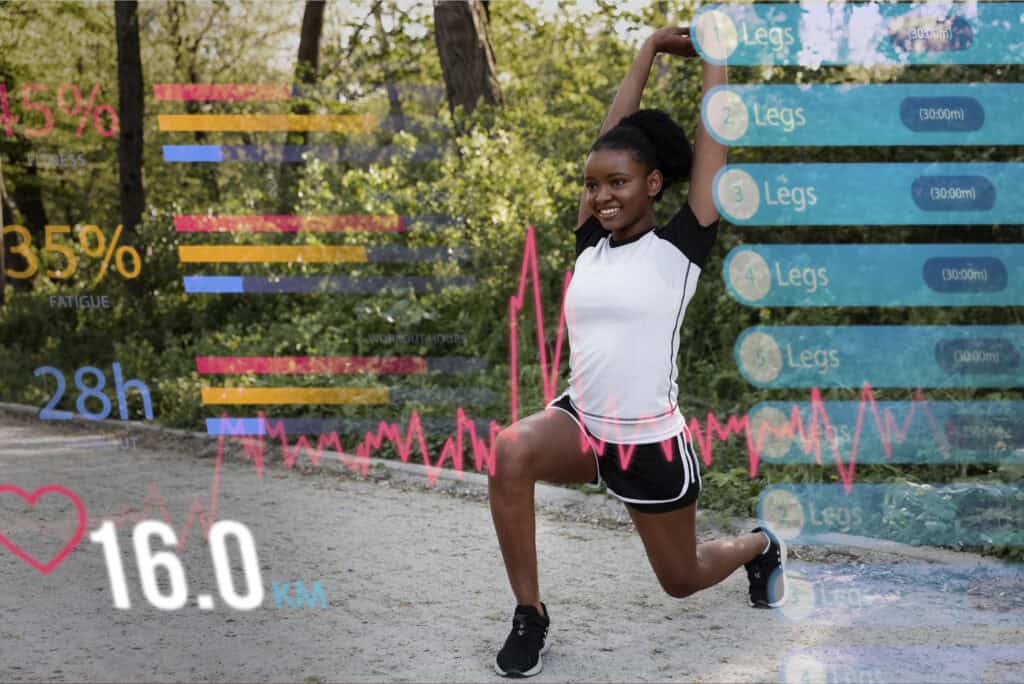Monitoring your workout is essential for optimizing performance and ensuring that you’re getting the most out of every session. Whether you’re aiming to build strength, improve endurance, or lose weight, tracking your workout intensity can help you stay on target. This article will explore the best ways to monitor your workout, focusing on the Rate of Perceived Exertion (RPE), the Borg Scale, heart rate, and other scientifically supported markers.
Understanding Rate of Perceived Exertion (RPE)
What is RPE?
The Rate of Perceived Exertion (RPE) is a subjective measure used to assess the intensity of exercise. It’s based on how hard you feel you are working, taking into account factors like your breathing rate, muscle fatigue, and overall effort. The RPE scale typically ranges from 0 to 10, where 0 represents no effort and 10 represents maximum effort.
The Borg Scale
The Borg Scale is a specific type of RPE scale that ranges from 6 to 20. This scale was developed by Dr. Gunnar Borg and is often used in clinical settings and research. The Borg Scale is designed to correlate with heart rate, where a score of 6 corresponds to a resting heart rate of around 60 beats per minute (bpm), and a score of 20 corresponds to a heart rate of 200 bpm.
Using the Borg Scale can help you estimate the intensity of your workout relative to your maximum capacity. A score of 12-14 on the Borg Scale typically indicates a moderate intensity, which is ideal for improving cardiovascular fitness without overexerting yourself.
Why Use RPE?
RPE is valuable, to monitor, because it allows you to adjust your workout intensity based on how you feel, rather than relying solely on external measures like weight lifted or distance covered. It’s particularly useful for endurance athletes and those involved in high-intensity interval training (HIIT), where the ability to gauge effort is crucial for maximizing performance.
Scientific Support for RPE: Research has shown that RPE is a reliable indicator of exercise intensity, particularly in endurance activities like running and cycling. Studies have found a strong correlation between RPE and physiological markers like lactate threshold and VO2 max, making it a useful tool for athletes of all levels.
Monitoring Heart Rate
Why Monitor Heart Rate?
Heart rate is one of the most objective measures of exercise intensity. It provides real-time feedback on how hard your heart is working, allowing you to adjust your effort to stay within your target heart rate zone. Monitoring your heart rate can help you avoid overtraining and ensure that you’re working at an intensity that aligns with your fitness goals.
Target Heart Rate Zones
Your target heart rate zone is typically 50-85 percent of your maximum heart rate. This can be estimated using the formula: 220 minus your age. Within this range, different zones correspond to different levels of exercise intensity:
- 50-60%: Light intensity, ideal for warm-ups and cool-downs.
- 60-70%: Moderate intensity, suitable for improving cardiovascular health.
- 70-85%: High intensity, ideal for improving aerobic capacity and endurance.
For fat loss and cardiovascular fitness, staying in the moderate to high-intensity zones is often recommended. High-intensity interval training (HIIT), for example, involves short bursts of activity in the 70-85 percent zone, followed by recovery periods in the lower zones.
Heart Rate Variability (HRV)
Heart Rate Variability (HRV) is another valuable marker that reflects the variation in time between heartbeats. A higher HRV generally indicates better cardiovascular fitness and a more resilient autonomic nervous system. Monitoring HRV can help you gauge recovery, stress levels, and readiness for intense workouts.
Scientific Support for Heart Rate Monitoring: Numerous studies have demonstrated the effectiveness of heart rate monitoring in optimizing training intensity. For instance, research has shown that training within specific heart rate zones can improve aerobic capacity and endurance more effectively than unstructured training.

Other Markers to Monitor Your Workout
Lactate Threshold
The lactate threshold is the point during intense exercise when lactate builds up in the bloodstream faster than it can be removed. Monitoring your lactate threshold can help you determine the intensity at which you can sustain exercise without fatigue. Training at or just below your lactate threshold can improve endurance and delay the onset of fatigue.
VO2 Max
VO2 max is the maximum amount of oxygen your body can utilize during intense exercise. It’s considered one of the best indicators of cardiovascular fitness. Monitoring VO2 max can help you assess your aerobic capacity and track improvements over time.
VO2 max can be measured directly in a lab setting. It can also be estimated using field tests like the Cooper test or a multi-stage fitness test. Higher VO2 max values are associated with improved endurance performance, making it a key metric for athletes.
Power Output
For those involved in strength training or cycling, power output is another important marker. Power is the rate at which work is performed and is often measured in watts. Monitoring power output in a workout can help you quantify your performance and ensure that you’re working at the right intensity to achieve your goals.
For example, cyclists often use power meters to monitor their output during training sessions. By maintaining a specific power output, they can optimize their training to improve speed and endurance.
Scientific Support for Power Output: Research has shown that power output is closely related to both endurance and strength performance. Monitoring power can provide valuable insights into your training efficiency and help you identify areas for improvement.
Best Options to Monitor Your Workout Routine
To get the most out of your workout, it’s essential to integrate these monitoring tools into your routine:
- Start with RPE: Use the RPE scale at the beginning of your workout to gauge how you’re feeling. This can help you adjust your workout intensity to match your energy levels.
- Monitor Heart Rate: Keep an eye on your heart rate throughout your workout to ensure you’re staying within your target zones. This is especially important during cardiovascular activities like running, cycling, or HIIT.
- Track HRV: Monitor your HRV regularly to assess your recovery and readiness for intense workouts. If your HRV is low, consider taking a rest day or engaging in low-intensity exercise.
- Incorporate Power Metrics: If you’re involved in strength training or cycling, consider using power meters or other tools to monitor your output. This can help you maintain consistent intensity and track progress over time.
Conclusion
Monitoring your workout is crucial for optimizing performance and achieving your fitness goals. By using tools like RPE, heart rate, HRV, and other scientific markers, you can ensure that you’re working at the right intensity and making the most of every session. Whether you’re an endurance athlete, strength trainer, or fitness enthusiast, these monitoring techniques can help you stay on track and reach new heights in your fitness journey.
References
- Borg, G. (1982). Psychophysical bases of perceived exertion. Medicine and Science in Sports and Exercise, 14(5), 377-381.
- Eston, R. G., & Williams, J. G. (1988). Reliability of ratings of perceived effort regulation of exercise intensity. British Journal of Sports Medicine, 22(4), 153-155.
- Achten, J., & Jeukendrup, A. E. (2003). Heart rate monitoring: applications and limitations. Sports Medicine, 33(7), 517-538.
- Plews, D. J., et al. (2013). Heart rate variability and training intensity distribution in elite rowers. International Journal of Sports Physiology and Performance, 8(5), 497-504.
- Bosquet, L., et al. (2002). VO2 response to submaximal exercise: effects of training in older adults. Medicine and Science in Sports and Exercise, 34(1), 75-80.
By understanding and applying these scientifically supported methods, you’ll be better equipped to maximize your workout effectiveness and reach your fitness goals.
Stay Strong Together
For those looking to enhance their fitness journey, the award-winning Jefit app is an invaluable tool. Jefit offers personalized workout plans, extensive exercise libraries, and progress tracking features to help you reach your health goals. Whether you’re focusing on your carb intake, aiming to build muscle, or seeking to improve overall fitness, Jefit provides the resources and support needed for success. Join millions of users worldwide who have transformed their lives with Jefit, and take control of your health and fitness today.
- The New Rules of Strength Training in 2026 - December 24, 2025
- Fibermaxxing: Viral Nutrition Trend You Should Know - December 17, 2025
- Hybrid Metabolic Strength Training for Faster Results - December 10, 2025
